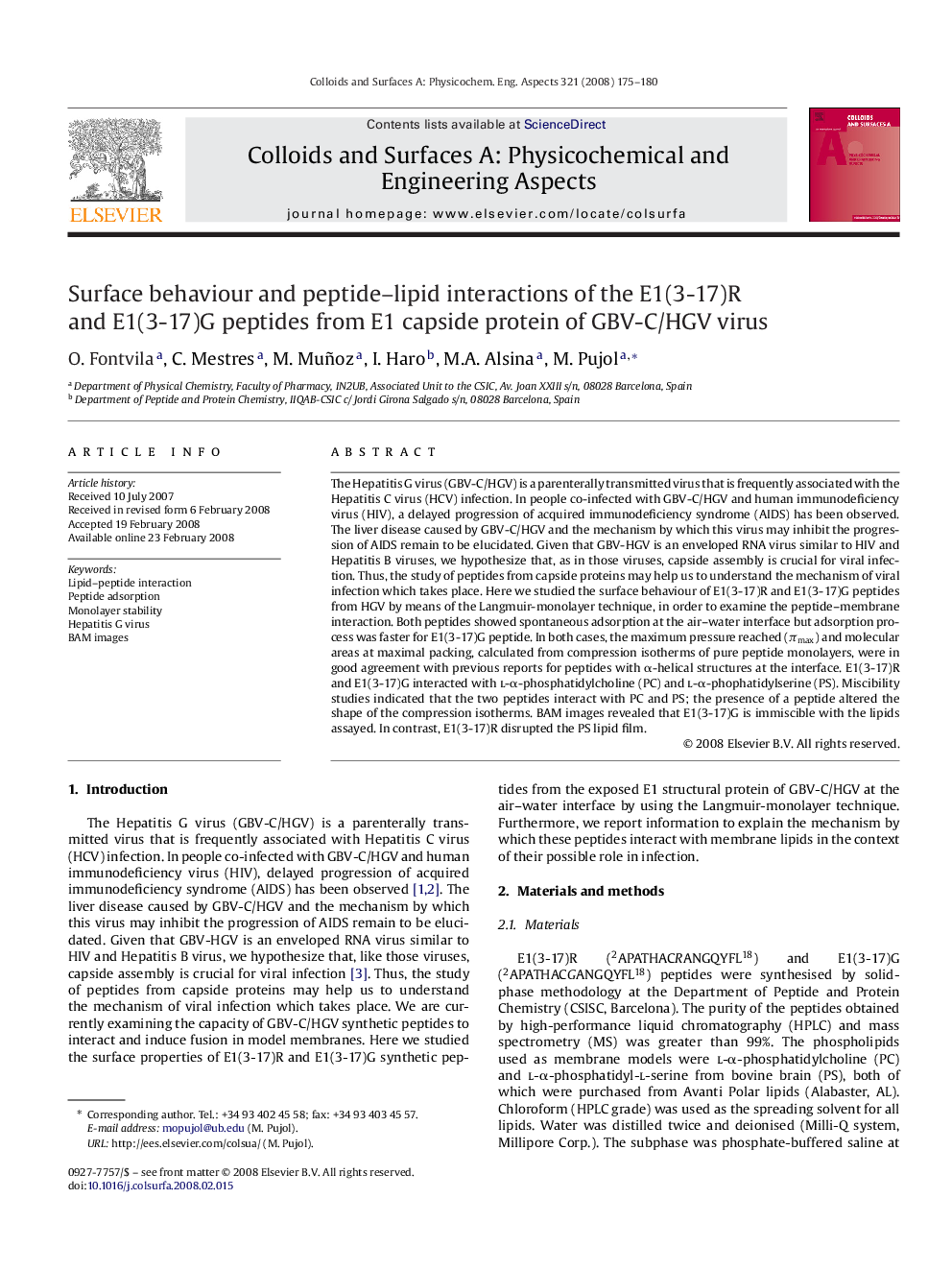| Article ID | Journal | Published Year | Pages | File Type |
|---|---|---|---|---|
| 596690 | Colloids and Surfaces A: Physicochemical and Engineering Aspects | 2008 | 6 Pages |
The Hepatitis G virus (GBV-C/HGV) is a parenterally transmitted virus that is frequently associated with the Hepatitis C virus (HCV) infection. In people co-infected with GBV-C/HGV and human immunodeficiency virus (HIV), a delayed progression of acquired immunodeficiency syndrome (AIDS) has been observed. The liver disease caused by GBV-C/HGV and the mechanism by which this virus may inhibit the progression of AIDS remain to be elucidated. Given that GBV-HGV is an enveloped RNA virus similar to HIV and Hepatitis B viruses, we hypothesize that, as in those viruses, capside assembly is crucial for viral infection. Thus, the study of peptides from capside proteins may help us to understand the mechanism of viral infection which takes place. Here we studied the surface behaviour of E1(3-17)R and E1(3-17)G peptides from HGV by means of the Langmuir-monolayer technique, in order to examine the peptide–membrane interaction. Both peptides showed spontaneous adsorption at the air–water interface but adsorption process was faster for E1(3-17)G peptide. In both cases, the maximum pressure reached (πmax) and molecular areas at maximal packing, calculated from compression isotherms of pure peptide monolayers, were in good agreement with previous reports for peptides with α-helical structures at the interface. E1(3-17)R and E1(3-17)G interacted with l-α-phosphatidylcholine (PC) and l-α-phophatidylserine (PS). Miscibility studies indicated that the two peptides interact with PC and PS; the presence of a peptide altered the shape of the compression isotherms. BAM images revealed that E1(3-17)G is immiscible with the lipids assayed. In contrast, E1(3-17)R disrupted the PS lipid film.
